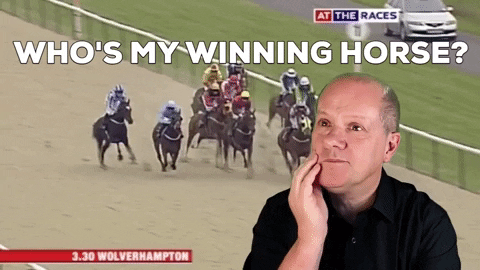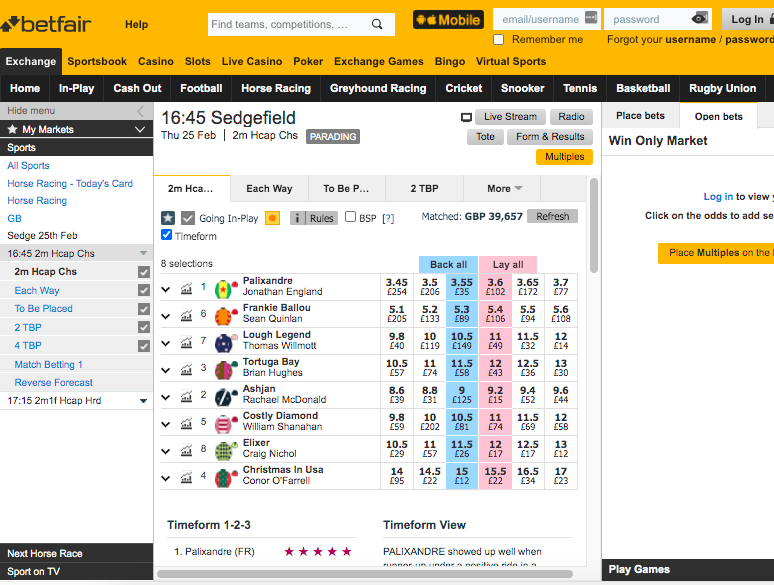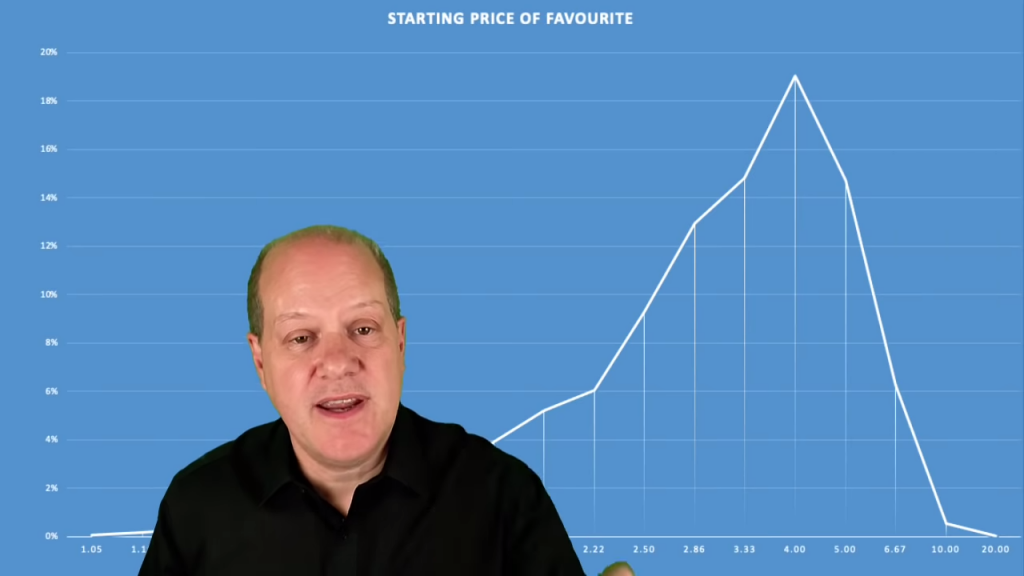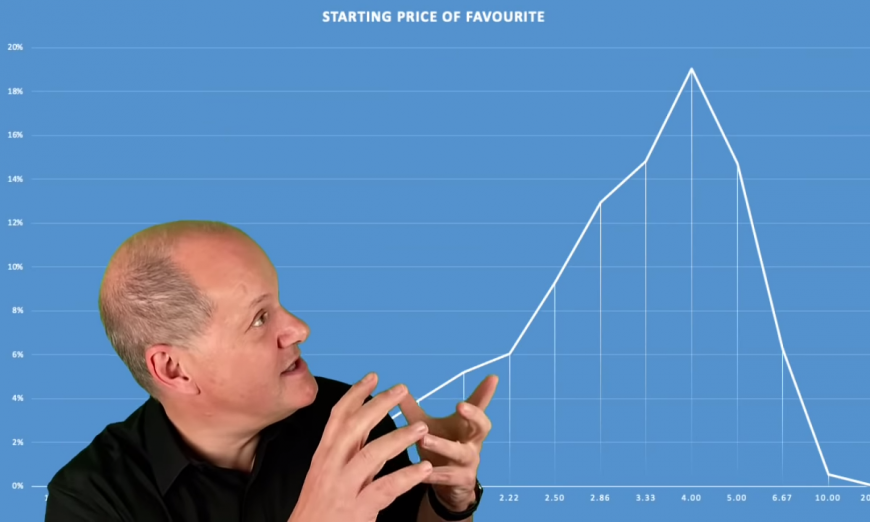So you’re betting on horse racing and you want to pick a winner. Which horse should you pick?

Of course, you should pick the favourite, because that has the best chance of winning the race.
But you may also be aware that only one-third of favourites go on to win. So, why is that and more importantly, what can you do about it?
The favourite – what’s the big deal?
So if you’re going to have a bet in a horse race, you will always find there is a lot of attention on the favourite. If you go to any of the racing channels on TV, you will see that they list all of the odds with the favourites at the top and lesser favoured horse are further down the list.

Everybody has an opinion on the favourite, whether it’s going to win or not, whether they think it’s justified as a favourite. In the grand scheme of things, if you bet on a favourite it will win more often than any of the other horses in the race.
Not exactly a shock for many of us, but at least the market is fairly efficient from that perspective.
There is more money bet on the favourite than any other particular runner in any particular horse race. That is just because people look at the favourite and they realise that that has the best chance of winning and follow up that view with some money.
However, in the modern age, that’s a little bit one dimensional in terms of the way that you think. So it’s worth us exploring exactly what does the term favourite mean, but also why is it the case that they only win one-third of the time?
What chance does the favourite have of winning

To explain the phenomenon of what a favourite is we’re going to use the Betfair betting exchange. On it, we have a list of runners and the runner that is listed at the top is the favourite. The favourite because it’s at the shortest odds.
Now, the interesting thing about decimal odds and all odds, in general, is that they represent the market’s estimation of the chance this horse has of winning this particular race. So if we look at this particular runner and we actually do one divided by its decimal odds, this will come up with a percentage figure and that percentage figure is the chance of the horse winning the race.
(1/3.5)*100 = 28.5% (approx)
So if we look at the favourite in this particular race, the one right at the top of this list, and we do one divided by its odds, we will actually see that it has a better than 28% chance of winning this race. That is why it’s the favourite, the market has assigned it value on that particular basis.
Now, if you go further down the list and we can see something here priced at odds of 11.50.
(1/11.50)*100 = 8.7% (approx)
If we do one divided by 11.50 and we do that calculation, then what we will see as that comes out at just under 9%. So the horse that’s priced at 9, the market is saying, only has a 9% chance of winning this particular race. But we can see that the favourite on this particular occasion has a more than a 28% chance of winning this particular race.
Now if you actually look at a market, the favourites was listed at the top and then it goes in descending order. If you do that simple calculation, you will actually be able to learn what percentage chance the market is assigning to that particular horse.
Why do favourites only win 1/3rd of the time?

I’ve got a graph shown above that represents the frequency, the distribution of the price of a favourite within a race.
We looked at a race and if the favourite was that evens, we basically chalked up a tick against evens and then plotted every single price that you could get on a favourite over tens of thousands of races.
You can see there’s a huge bump on one side and that is described by the fact that roughly about 50% of races in the UK are handicap races. The whole idea of a handicap race is they get a whole load of horses of different abilities, assign them weights so that each horse has about an equal chance of winning the race.
If you can’t pick out a clear favourite within the race, then there’s a lot of uncertainty, the chance of any one individual horse winning is a little bit lower and therefore its odds will be higher. So you can see that it’s skewed because of the number of handicaps, which represents that particular part of the graph.
Why 1/3rd is the magic number
So when you look at the average price of a favourite, you can see that most favourites are priced up at the higher end simply because of the number of handicaps. However, there are a lot of favourites that are priced at much lower odds. Now if you take all of those price points, all of the favourites divide them by the number of races you come up with a magical figure.
Now that magical figure comes out at about one third.
So, if you want to know why one-third of favourites win the race. It’s because the chance of a favourite winning varies dramatically depending upon the type of race. However, if you aggregate them all together, that’s the number that you come out with.

